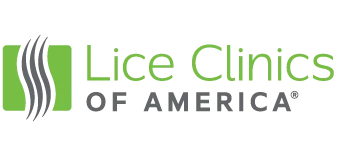I’ve Been in Lockdown – How did I get Lice?
As the COVID-19 pandemic continues, many around the world have stayed indoors to help prevent the disease’s spread. College students are participating in lectures online, adults are telecommuting from home, and their kids are in Zoom meetings and Google Hangouts for school. Yet in this unprecedented era of social distancing, lice are an epidemic that parents are still battling. With schools across the country operating either partially or completely online, how are families still catching head lice?
The Frustrating Reality of Lice
What most people don’t know is that a case of head lice often begins without any noticeable symptoms. According to the Centers for Disease Control and Prevention, an infestation can even take up to six weeks to notice. And in roughly half the cases, infested individuals are asymptomatic. That means some individuals may not realize they’ve been infested for several months.
So, if you or your child have come down with a case of head lice while social distancing, it’s very possible that your infestation began before stay-at-home policies were in effect.
“It’s a confusing experience people are having,” says Wade Huntsman, owner of Lice Clinics of America – Colorado. “People are coming into our clinic saying they’ve been at home, they’re not visiting friends or family, and they have no idea how they caught lice. They’re in shock when we explain that they likely caught it before lockdown even began.”
Quarantining with an Infested Family Member
A lack of symptoms isn’t the only hurdle that families and individuals with head lice face. The primary way that head lice spread is by direct head-to-head contact. This means that one infested member of the household often unknowingly infests others in the family. If just that one person gets checked and treated for lice, members of the same household may be passing lice around to each other for months without realizing that the infestations are coming from each other!
What to Do
Home remedies and over-the-counter treatment products may seem like the ideal first line of defense. However, these methods are ineffective at best and potentially dangerous at worst.
The difficulties of social distancing don’t have to be made worse by suffering from head lice—save yourself the hassle and extra money and contact Lice Clinics of America. Our exclusive, FDA-approved lice treatment device, the AirAllé, uses controlled heated air to kill more than 99 percent of lice and eggs (nits) in just one hour. Our clinics are also taking extra safety and sanitary precautions to ensure that our customers and our staff are comfortable and safe. We are committed to making sure that you will walk out our doors healthy, happy, and lice-free.
Lice Clinics of America has successfully treated more than 675,000 cases of head lice. The company has more than 265 clinics in 20 countries, making it the world’s largest network of professional lice treatment centers. Lice Clinics of America – Colorado is located at 300 S. Jamaica Court, Suite 310, Aurora, CO 80014. The Aurora location is open seven days a week by appointment. Call 720-499-1578 or visit https://liceclinicscolorado.com for more information or to schedule an appointment.











